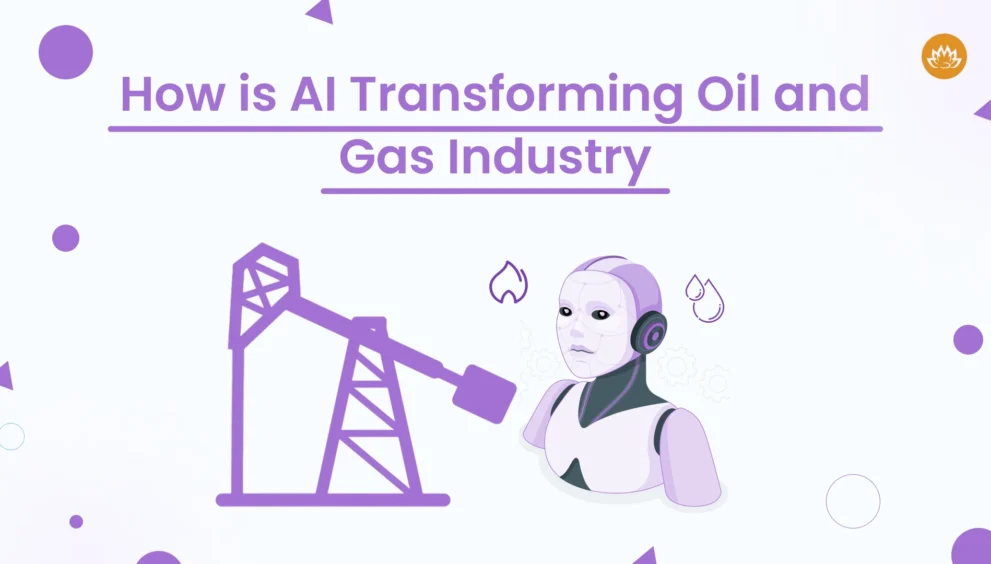Artificial Intelligence Reshapes the Oil and Gas Industry

Houston, USA
Artificial intelligence (AI) is revolutionizing the global oil and gas industry in 2025, driving unprecedented efficiency, cost savings, and sustainability across exploration, production, and supply chain operations. As the sector navigates a projected oil surplus, geopolitical uncertainties, and the push for net-zero emissions, AI is proving to be a game-changer for companies like ExxonMobil, Saudi Aramco, and BP. This article explores how AI is transforming the industry, addressing market challenges, and shaping its future.
AI-Powered Exploration and Drilling
AI is transforming upstream operations by enhancing exploration accuracy and drilling efficiency. Machine learning algorithms analyze seismic data to identify untapped reservoirs, boosting discovery rates by 10–12% in fields like the Permian Basin and Qatar’s North Field, according to a 2025 Wood Mackenzie report. ExxonMobil’s AI-driven drilling optimization in the Gulf of Mexico has reduced rig times by 20%, saving $1.5 billion globally in 2024. In 2025, AI adoption in exploration is expected to grow by 25%, helping companies maintain output despite a projected 1.7 million barrels per day (b/d) oil surplus by early 2026, which could push Brent crude prices from $68 per barrel in August 2025 to $50 per barrel in Q1 2026.
Predictive Maintenance and Operational Efficiency
AI-powered predictive maintenance is minimizing downtime and operational costs. By analyzing data from Industrial Internet of Things (IIoT) sensors, AI models predict equipment failures, reducing unplanned outages by 15% at BP’s North Sea facilities in 2024. Saudi Aramco’s Khurais field reported a 10% cost reduction through AI-driven maintenance scheduling, with similar gains expected across 30% of global oil and gas operations in 2025. These efficiencies are critical as companies face price volatility and competition from low-cost producers in a market anticipating oversupply.
Supply Chain and Logistics Optimization
AI is streamlining oil and gas supply chains, enhancing resilience against disruptions. Shell’s AI-powered logistics platform optimized LNG shipments to Asia, cutting delivery costs by 8% in 2024, a vital advantage as global LNG demand peaks at 425 billion cubic meters in 2025. Predictive analytics are helping companies like Chevron adjust inventories in response to geopolitical risks, such as tensions in the Strait of Hormuz, which handles 21% of global LNG. In 2025, 60% of major firms are expected to adopt AI for supply chain management, improving demand forecasting accuracy by 12% and mitigating risks from global trade disputes, including U.S. tariffs.
Enhancing Sustainability and Emissions Reduction
AI is playing a pivotal role in the industry’s energy transition, particularly in reducing emissions. AI-driven carbon capture, utilization, and storage (CCUS) optimization at ExxonMobil’s LaBarge facility lowered capture costs by 10%, enabling 8 million metric tons of CO2 capture annually. Methane detection systems, powered by AI and satellite imagery, reduced leaks by 7% at TotalEnergies’ Qatari gas fields in 2024. Despite these advances, a 2025 Deloitte survey indicates only 43% of executives prioritize AI for sustainability due to high implementation costs. AI is also supporting renewable integration, with Cheniere Energy using machine learning to optimize 50 MW of solar power at its Corpus Christi LNG plant, cutting emissions by 5%.
Petrochemical and Refining Advancements
The petrochemical sector, projected to drive 18–20% of global oil demand by 2040, is leveraging AI to enhance efficiency. Saudi Aramco’s Jafurah gas project used AI to improve ethylene yields by 6%, while Sinopec’s refineries reported a 7% cost reduction through AI-driven process optimization in 2024. These advancements are critical as petrochemical demand grows in Asia, though global supply chain disruptions challenge feedstock reliability. In 2025, AI adoption in petrochemical plants is expected to increase by 15%, supporting competitive pricing against Middle Eastern producers.
Cybersecurity and Workforce Transformation
The rise of AI has heightened cybersecurity risks, with 350 cyberattacks on oil and gas infrastructure reported in 2024. Companies like BP are investing $600 million in AI-powered threat detection systems in 2025 to protect digital assets. Workforce dynamics are shifting, with AI-driven automation leading to 10,000 job cuts globally in 2024–2025. However, retraining programs are transitioning 5,000 workers to AI and renewable energy roles, supported by $300 million in industry-led initiatives. These efforts ensure the workforce remains agile in a digital-first industry.
Market Pressures and Strategic Adaptation
AI’s role is critical as the industry navigates a projected oil price decline and geopolitical challenges. The EU’s March 2025 ban on Russian LNG re-exports is driving demand for U.S. and Qatari LNG, with AI optimizing export logistics to meet Europe’s 23.6% import surge in H1 2025. Companies are using AI to model market scenarios, helping mitigate risks from a potential LNG glut starting in 2026. Strategic investments in AI, totaling $12 billion in 2025, are enabling firms to maintain capital discipline, with the industry distributing $213 billion in dividends in 2024.
Outlook for 2025
In 2025, AI is redefining the oil and gas industry by enhancing exploration, streamlining operations, and supporting sustainability. As companies face oversupply risks, geopolitical tensions, and net-zero pressures, AI-driven innovations are critical for maintaining competitiveness. By integrating AI across the value chain, the industry is poised to navigate market challenges and shape a resilient, sustainable future through 2030.
- Oil Industry
- Trending







